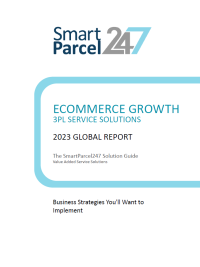When venturing into the world of e-commerce, aspiring entrepreneurs must navigate various business models to determine the best approach for their online venture. Understanding the different e-commerce models available is crucial to making informed decisions about what to sell and how to structure your business.
In this article, we will explore four popular e-commerce models. By grasping the nuances of each model, you’ll be better equipped to choose the one that aligns with your goals and target audience.
Business-to-Consumer (B2C)
The Business to Consumer (AKA direct-to-consumer) e-commerce model involves selling products or services directly to individual consumers. This approach allows businesses to establish a strong brand presence and build a direct relationship with customers.
B2C e-commerce is ideal for entrepreneurs creating unique shopping experiences and tailoring their marketing strategies to a specific target market.
To succeed in this model, investing in a user-friendly website, compelling product descriptions, and efficient shipping and delivery processes is essential. Offering exceptional customer service and personalized experiences can help differentiate your business in the competitive online marketplace.
Business-to-Business (B2B)
The Business-to-Business (B2B) e-commerce model involves selling products or services to other businesses rather than individual consumers. B2B e-commerce platforms cater to the needs of wholesalers, manufacturers, and distributors by streamlining procurement processes and facilitating large-volume transactions.
B2B e-commerce often involves negotiated pricing, bulk ordering, and integration with supply chain systems. Your online store should provide detailed product information, pricing tiers, and seamless order management capabilities if you target other businesses. Building trust and solid relationships with your customers is crucial for long-term success in this model.
Consumer-to-Business (C2B)
The Consumer-to-Business (C2B) e-commerce model offers a unique perspective by allowing individuals to sell products or services directly to businesses. This model is particularly relevant in industries where companies require specialized expertise or customized solutions.
C2B platforms can include freelancing websites, where individuals offer their skills and services to businesses in need. Entrepreneurs considering the C2B model should build credibility, showcase their expertise, and provide compelling value propositions.
Leveraging social proof, testimonials, and case studies can help establish trust and attract business clients. Clear communication channels and prompt responses are vital to winning contracts and maintaining positive relationships with your corporate customers.
Consumer-to-Consumer (AKA Marketplaces)
The Consumer-to-Consumer (C2C) e-commerce model, often realized through online marketplaces, enables individuals to buy and sell products or services directly with one another. Marketplaces create platforms where consumers can connect, trade, and engage in peer-to-peer transactions.
Examples of C2C marketplaces include online auction sites, classified advertisements, and peer-sharing platforms.
To succeed in this model, you need to establish a reliable and secure online platform, ensure fair transaction processes, and promote a vibrant community atmosphere. Implementing user ratings and reviews, robust dispute resolution mechanisms, and strong seller verification processes are critical for fostering trust and ensuring positive experiences for all participants.
Building Your Online Store
Once you have decided on the e-commerce model that aligns with your business goals, it’s time to build your online store. Choosing the right e-commerce platform is crucial for creating a seamless customer shopping experience.
Evaluate platforms based on ease of use, scalability, customization options, and integration capabilities. Invest in professional web design that reflects your brand identity and enhances user experience. Your website should be visually appealing, mobile-friendly, and optimized for search engines.
To entice customers and facilitate smooth transactions, carefully curate your product inventory and write compelling product descriptions. You’ll also want to focus on highlighting the unique selling points of your products, addressing potential customer concerns, and providing accurate and detailed information.
High-quality product images and customer reviews can significantly impact purchase decisions. Implement secure payment gateways and establish reliable shipping and delivery processes to ensure customer satisfaction.
Funding Your eCommerce Business
Starting an e-commerce business often involves initial startup costs. While these costs can vary depending on your chosen model, they may include website development, inventory acquisition, marketing, and operational expenses.
Financing your business can be achieved through various means. Self-funding, where you invest your own savings or personal assets, gives you complete control but may limit your available resources.
Alternatively, you can explore small business loans from banks or other financial institutions. Another option is seeking support from friends and family who believe in your vision and are willing to provide financial assistance. Crowdfunding platforms can also raise capital by pitching your business idea to a broader audience.
As you embark on your e-commerce journey, understanding the different e-commerce models available is paramount. By carefully selecting the appropriate model and implementing effective strategies, you can position your business for success.
Remember, each e-commerce model has unique requirements, challenges, and opportunities, so take the time to evaluate your goals and target market to make an informed decision aligning with your entrepreneurial vision.



